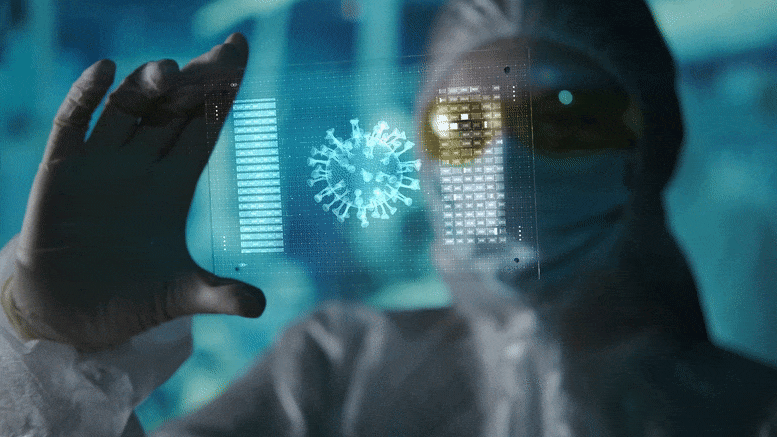Researchers Find COVID-19 Virus Was “Highly Human Adapted” – Exact Origins Still a Mystery
0 View
Share this Video
- Publish Date:
- 25 June, 2021
- Category:
- Covid
- Video License
- Standard License
- Imported From:
- Youtube
Tags

Scientists using computer modeling to study SARS-CoV-2, the virus that caused the COVID-19 pandemic, have found that the virus is most ideally adapted to infect human cells — rather than bat or pangolin cells, which again raises questions about its origin.
In a paper published in the Nature journal Scientific Reports, Australian scientists describe how they used high-quality computer modeling of the shape of the SARS-CoV-2 virus at the start of the pandemic to predict how 12 domestic and exotic animals would survive.
“Humans showed the strongest spike binding, consistent with the high susceptibility to the virus, but very surprising if an animal was the first source of the infection in humans.” — Professor David Winkler, La Trobe University
Their work has focused on helping to identify intermediate animal vectors that may have played a role in the transmission of bat virus to humans, and to understand any risk posed by the susceptibility of companion animals such as cats and dogs, and commercial animals such as cows, sheep, pigs and horses.
The scientists from Flinders University and La Trobe University used genomic data from the 12 animal species to painstakingly build computer models of the major ACE2 protein receptors for each species. These models were then used to calculate the strength of binding of the SARS-CoV-2 spike protein to the ACE2 receptor of each species.
Surprisingly, the results showed that SARS-CoV-2 bound more strongly to ACE2 on human cells than all animal species tested, including bats and pangolins. If one of the tested species was the origin, it would normally be expected to show the highest binding to the virus.
Professor Nikolai Petrovsky, Flinders University. Credit: Flinders University
“Humans showed the strongest spike binding, consistent with the high susceptibility to the virus, but very surprising if an animal was the first source of the infection in humans,” said La Trobe University Professor David Winkler.
The findings, originally released on the ArXiv preprint server, have now been peer-reviewed and published in Scientific Reports (Springer Nature).
“The computer modeling found that the ability of the virus to bind to the bat ACE2 protein was poor relative to its ability to bind human cells. This argues that the virus should not be transmitted directly from bats to humans. If the virus therefore has a natural source, it can only have come to humans via an intermediate species that has yet to be found,” says Professor Nikolai Petrovsky, affiliated with Flinders.
Professor David Winkler, La Trobe University, Australia. Credit: La Trobe University
The team’s computer modeling shows that the SARS-CoV-2 virus is also relatively strongly bound to pangolin ACE2, a rare exotic anteater found in some parts of Southeast Asia and occasionally used as food. or traditional medicines. Professor Winkler says pangolins showed the highest peak binding energy of any animal the study looked at — significantly higher than bats, monkeys and snakes.
“While some scientists falsely suggested early in the pandemic that they had found SARS-CoV-2 in pangolins, this was due to a misunderstanding and this claim was quickly withdrawn because the pangolin coronavirus they described contained less than 90% genetics. showed a resemblance. to SARS-CoV-2 and therefore could not be its ancestor,” says Professor Petrovsky.
However, this study and others showed that the specific portion of the pangolin coronavirus spike protein that binds ACE2 was nearly identical to that of the SARS-CoV-2 spike protein.
“This sharing of the nearly identical spike protein almost certainly explains why SARS-CoV-2 binds so well to pangolin ACE2. Pangolin and SARS-CoV-2 spike proteins may have developed similarities through a process of convergent evolution, genetic recombination between viruses, or through genetic engineering, with no current way of distinguishing between these capabilities,” said Professor Petrovsky.
“Overall, other than the intriguing pangolin ACE2 results, our study showed that the COVID-19 virus was very well adapted to infect humans.”
“We also inferred that some domesticated animals such as cats, dogs and cows are also likely to be susceptible to SARS-CoV-2 infection,” added Professor Winkler.
The all-important and open question of how the virus could infect humans currently has two main explanations. The virus may have passed from bats to humans via a yet to be found intermediate animal (zoonotic origin), but it cannot yet be ruled out that it was accidentally released from a virology laboratory. Thorough scientific, evidence-based research is needed to determine which of these explanations is correct.
How and where the SARS-CoV-2 virus adapted to become such an effective human pathogen remains a mystery, the researchers conclude, adding that finding the origins of the disease will aid efforts to identify the disease. protect humanity from future coronavirus pandemics.
Reference: “In silico comparison of SARS-CoV-2 spike protein ACE2 binding affinities between species and implications for virus origin” by Sakshi Piplani, Puneet Kumar Singh, David A. Winkler and Nikolai Petrovsky, June 24, 2021, Scientific Reports.
DOI: 10.1038/s41598-021-92388-5










